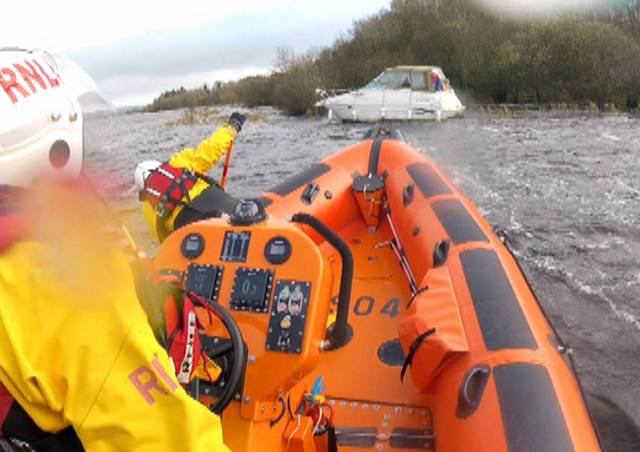Carrybridge RNLI’s inshore lifeboat launched yesterday afternoon (Tuesday 12 November) to a vessel adrift close to an island in Upper Lough Erne north-east of Knockninny Marina.
Winds were north-westerly Force 2 when the lifeboat Douglas Euan & Kay Richards arrived on the scene and slowly proceeded to the location of the vessel, with one man on board.
With the owner’s permission, and due to weather conditions pushing the boat onto the island, the lifeboat crew set up a tow line to being the casualty vessel into deeper water and then onwards to the safety of the marina.
Speaking following the callout, lifeboat operations manager Stephen Scott advised all boat users: “Before setting out on your journey, please plan your route and carry out regular checks of their vessels.
“With the constantly changing water levels at this time of year, please be vigilant for floating debris in the water. Also have a means of calling for assistance if you find yourself in trouble.
“If you see someone in trouble on the water or are in difficulties yourself the number to dial is: 999 or 112 and ask for the coastguard.”
Carrybridge RNLI is currently seeking new crew members to join its search and rescue service in Co Fermanagh, and will be hosting an open evening for all interested candidates at the lifeboat station next Thursday 21 November from 7pm.
































































